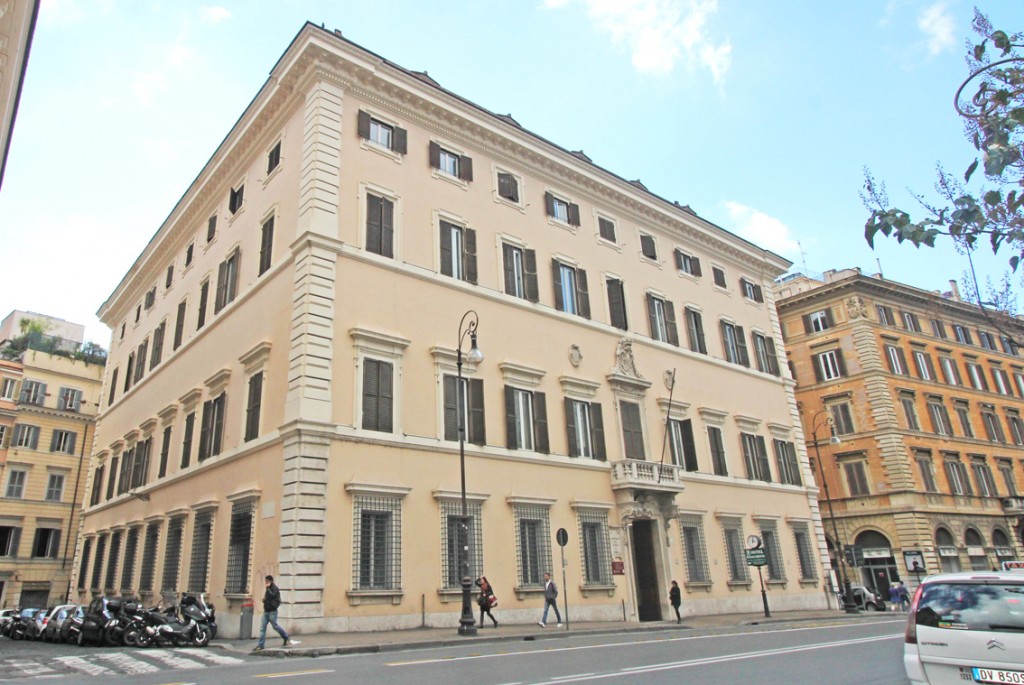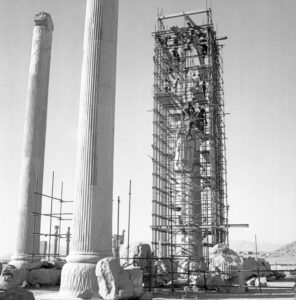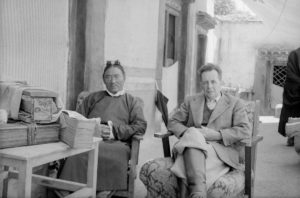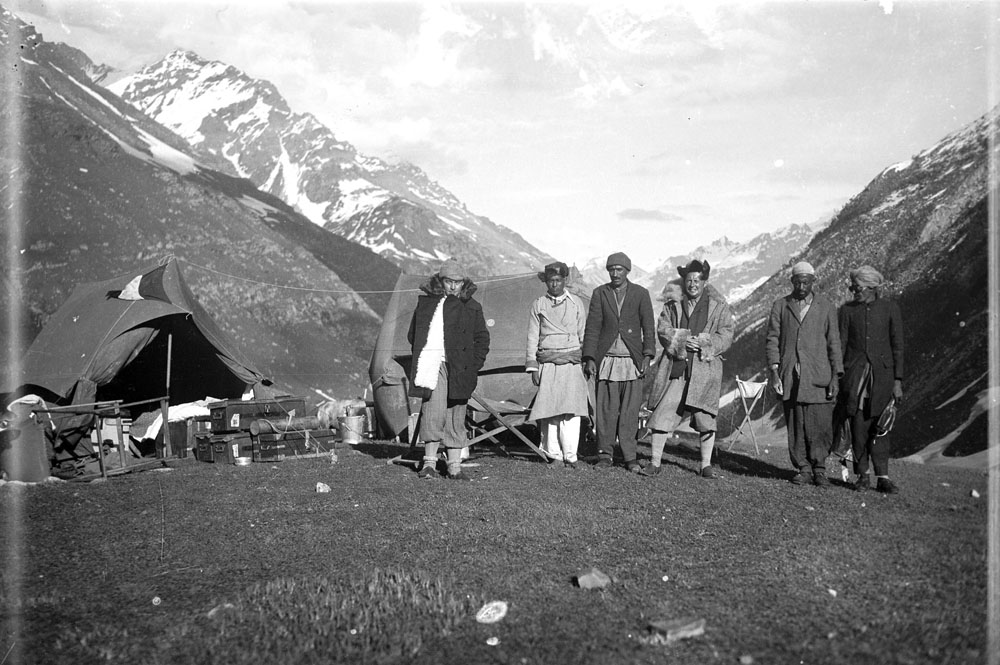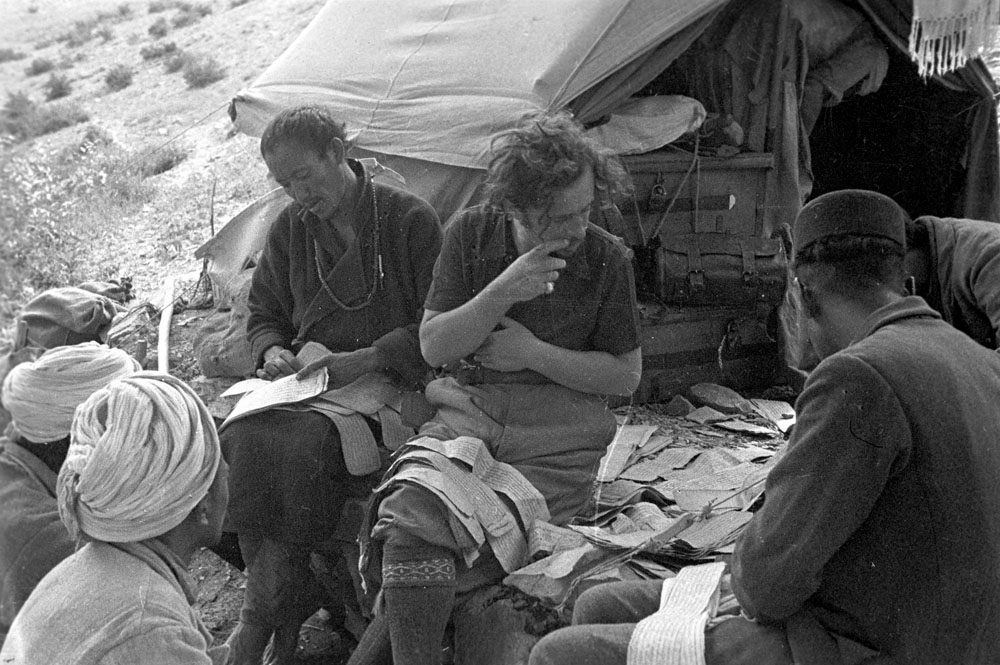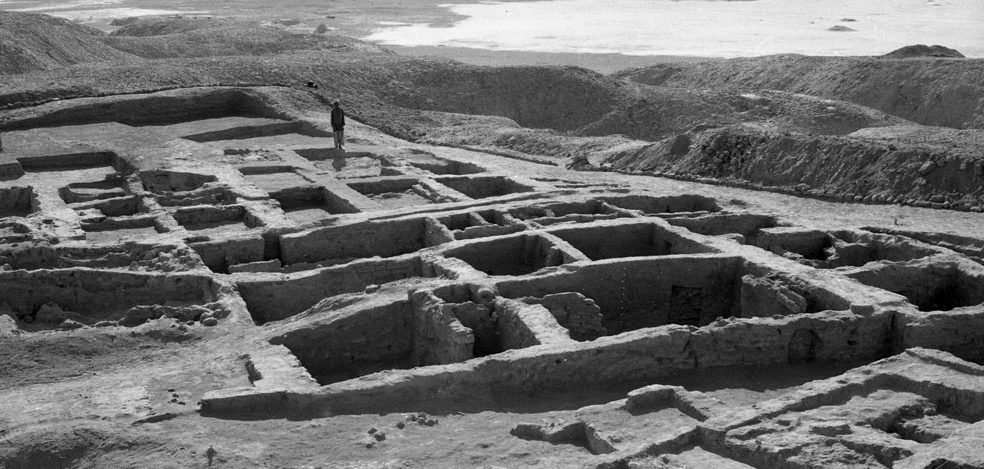
About ISMEO
The Association’s purpose is to conduct study, training and research programmes related to the cultures and countries of Asia and Africa and their interactions with the Mediterranean basin. To this end, it promotes and develops cultural and scientific contacts and collaboration with individual institutions and national and international organizations. In particular, ISMEO prepares and carries out study and research programmes; promotes cultural and scientific collaboration initiatives with the exchange of information, experience and knowledge between researchers and experts, also through the organization of conferences, meetings and presentations; prepares cooperation, consultancy and assistance projects, with particular reference to the conservation and enhancement of the cultural and environmental heritage of the countries mentioned above – and in this context conduct missions, study trips and archaeological campaigns in these countries; acquires and preserves all types of documents and evidence regarding the historical, artistic, cultural and environmental heritage of these countries; conducts publishing activities on its own or in collaboration with other agencies or publishers; organizes schools for teaching the languages and cultures related to the countries mentioned; promotes, designs, organizes, and also manages (to order or on the basis of specific funding) training and specialized instruction courses and seminars in its specialist disciplines; signs conventions and concludes agreements for shared activities with universities, academies, and cultural and research institutions both in Italy and abroad, as well as with international entities and other Italian or overseas bodies, associations and organizations involved in such activities; provides cultural assistance for the integration of immigrants into Italian society, offering appropriate collaboration to the local authorities responsible for this task; awards prizes and scholarships; establishes branch offices in Italy and abroad.
ISMEO – The International Association for Mediterranean and Oriental Studies
IBAN IT75V0200805052000102392454 UNICREDIT
The institutions that inspire us:
IsMEO – Italian Institute for the Middle and Far East
The idea of creating an institute dedicated largely to cultural relations between Italy and Asian countries, with an initial focus on India, came from talks held by Giuseppe Tucci with various interlocutors during his stay as a teacher in the universities of Shantiniketan, Dhaka and Kolkata, between 1925 and 1931. The proposal found fertile ground in the Italian government, and thanks also to support from philosopher Giovanni Gentile the Italian Institute for the Middle and Far East opened its doors at the end of 1933. In February 1934 Tucci, who was one of the two vice-presidents, gave a speech entitled “The East in contemporary culture” in which he presented the institute’s political programme. Tucci emphasized the need to adopt a completely new attitude towards Eastern peoples, criticizing the standard academic approach to oriental studies and proposing mutual understanding as the only possible foundation for economic and political relations.
Until the outbreak of the World War II, IsMEO mainly organized language courses and teaching exchanges, awarded scholarships, and edited periodicals aimed at educated but not specialist audiences, such as the organizations Asiatica and Yamato. A small oriental art museum was also opened; it closed in 1944, when the institute’s activities were suspended. When the institute reopened in 1947, with Tucci as president, it rapidly expanded its field of action, organizing expeditions to Tibet (1948) and Nepal (1952 and 1954); from 1955 onwards agreements were made with the governments of Pakistan, Afghanistan and Iran for the conduction of archaeological excavations and restoration of monuments in several historically important locations, such as the Swat Valley, Ghazni, Isfahan and Persepolis. In the following years similar accords were reached with other countries, including Nepal, Thailand, Oman, Yemen and Turkmenistan, making the institute an essential reference point for Italian research activities in Asia. With the backing of the Ministry of Public Education, the National Museum of Oriental Art was instituted in 1957 to house the finds from excavations. For reasons of funding, in 1995 the institute was merged with the Italian-African Institute, giving rise to the Italian Institute for Africa and the East.
THE ITALIAN-AFRICAN INSTITUTE
The origins of the Italian-African Institute date back to 1906, when the Italian Colonial Institute was created; in 1947 it became the Italian Institute for Africa. After it became the Italian-African Institute in 1971, this organization conducted basic research in all sectors of African studies, with a particular focus on humanities and social sciences. The prestigious institute offices in Via Aldrovandi, Rome – equipped with well-stocked library – were the centre of intense cultural activity. Close contacts and frequent exchanges with African countries were maintained through study missions, as well as language courses at the Rome headquarters. Thanks to this activity, the institute was for many years the reference point for researchers of African nationality present in Rome for periods of study. The institute was particularly effective during the presidency of Tullia Carettoni, who directed it until it merged with a new body, IsIAO, established in 1995 (under Law n° 505).
Under Carettoni’s directorship, “Africa Day” was celebrated at the Via Aldrovandi headquarters, with the participation of the President of the Italian Republic and the ambassadors of African countries. The Italian-African Institute’s wide spectrum of activities was reflected in “Africa”, an international periodical aimed at promoting research and practical collaboration between Italian and African scholars, with contributions from the foremost Italian and overseas African studies scholars, ranging from history to political and juridical institutions, ethnology, archaeology and anthropology.
The Italian Institute for Africa and the East – IsIAO
The Italian Institute for Africa and the East was established by Law n° 505 (1995) to maximize national initiatives and resources in the fields previously covered by the Italian Institute for the Middle and Far East and the Italian-African Institute. Its work followed the path traced by the two institutes which merged to create it, promoting Italy’s cultural relations with the countries of these two continents by means of international conferences, exhibitions, publications, archaeological excavations, restoration work and historical, linguistic and philological research projects. Notwithstanding difficulties posed by the changed international situation, the institute strived to keep Italian research activities alive in areas such as Pakistan and Afghanistan, as well as extending archaeological initiatives to various Central Asian and Caucasian states in ex-Soviet Union territories. New research was encouraged in Africa, especially in Mediterranean African countries – Egypt and Libya – and in Ethiopia, while study and training activities continued in West Africa. However, the institute suffered from a changed national political attitude compared to previous decades, which no longer saw culture as a useful tool for the pursuit of diplomatic and/or economic aims. Thus – following a significant progressive decrease in public contributions – it was closed in November 2011.
Directors
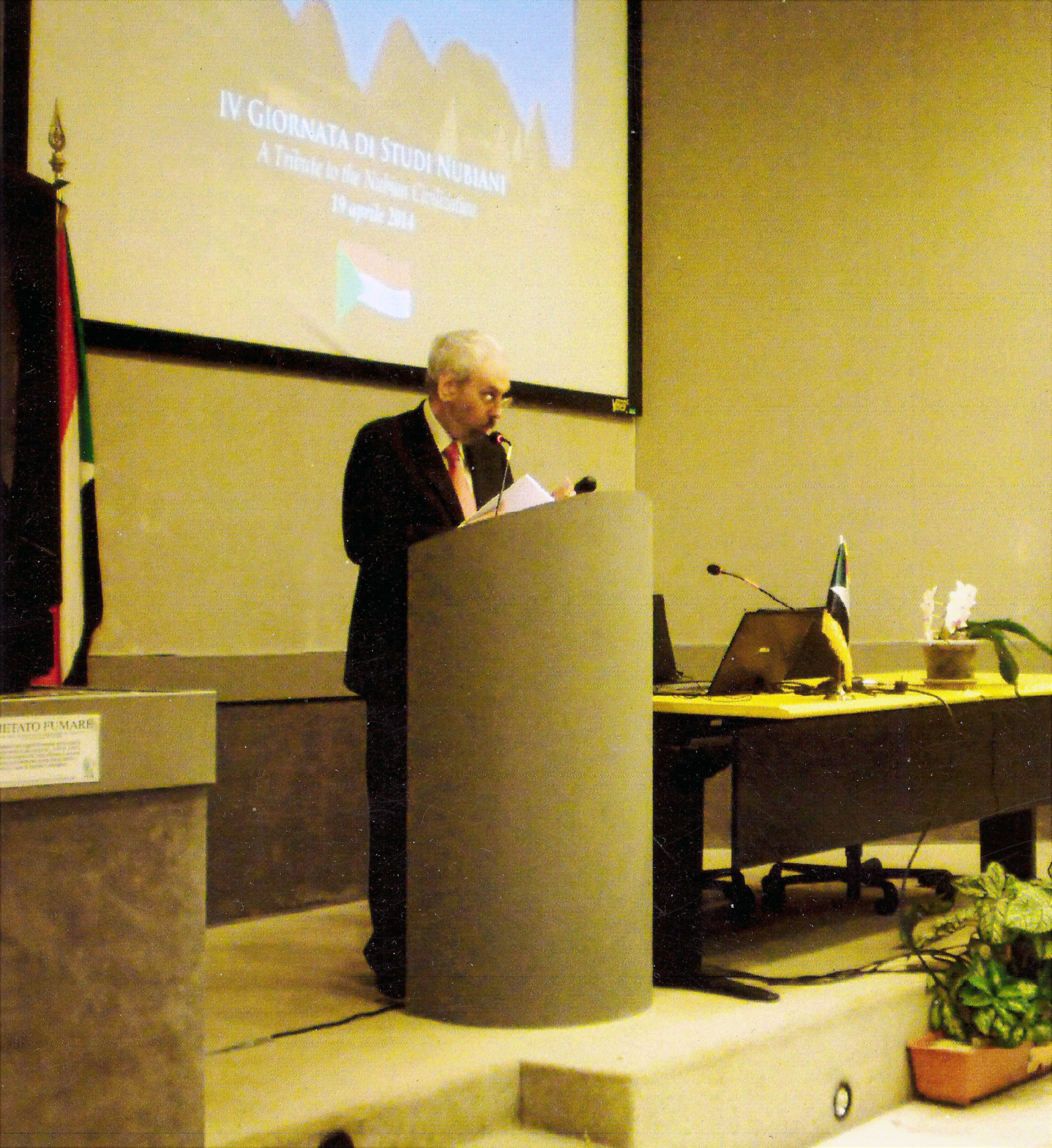
Adriano Valerio Rossi
PresidentAdriano Valerio Rossi(Rome, 1947) is an Italian linguist, philologist and Iran specialist.
Professor of Iranian Philology at the University of Naples “L’Orientale”and active in Italian research into Iranian languages. He studied the languages, history and civilization of the ancient and modern Near East at the University of Rome under A. Bausani, A. Pagliaro, W. Belardi, G. Cardona, S. Moscati, G. Castellino, M. Liverani, G. Garbini, S. Mazzarinoand G. Pugliese Carratelli, simultaneously acquiring extensive training in classical and philosophical studies. In 1980 he was appointed assistant professor, and in 1983 full professor, of Iranian Linguistics, and then Iranian Philology, at the University of Naples “L’Orientale”. He directed the Asian Lexicography Centre of the Italian Institute for the Middle and Far East (later the Italian Institute for Africa and the East) from 1984.
In connection with his interest in the Balochi language, in the 1980s he was director of a PRIN (Progetto di Rilevante Interesse Nazionale)programme on Iranian Ethnolinguistics, the first of these projects in the field of ethnolinguistics. He directs an international project that aims to print the first etymological dictionary of the Balochi language (Etymological-Comparative Dictionary of the Balochi Language) and is the founder and director of the [Newsletter of] Balochistan Studies. Since 1998 he has directed as Principal Investigator 6 PRIN programmes on topics concerning Iranian linguistics (Balochi etymology and Iranian fables) and ancient Persian epigraphy. He has worked (with over 150 publications) on historical and descriptive (ethno)linguistics (Ancient Persian, Elamite, Parthian, Middle Persian, Sogdian, Kurdish, Balochi, Farsi, Brahui, Urdu) and the political history of the Indian subcontinent and East Asia. Since the early 2000s he has directed the international DARIOSH project (= Digital Achaemenid Royal Inscriptions Open Schema Hypertext) for digital archiving and a new edition with commentary of the royal Achaemenid inscriptions.
He was director of the Asian Studies Department (1987-1988), dean of the Letters and Philosophy Faculty (1990-1992), vice-rector (1987-1988) and rector (1992-1998) of the Naples “Orientale”, where he is currently president of the teaching staff, and where he directs doctoral research on Turkey, Iran and Central Asia. He represented Italy in the Asia-Europe Foundation (ASEF) from its foundation (1997) to 2004. He is a member of the specialist boards of periodicals and monograph series, including Acta Iranica(Leuven, Peeters), Iran & the Caucasus(Leiden, Brill), Ancient Iranian Studies Series(Centre for the Great Islamic Encyclopaedia, Tehran),Balochistan Review(Quetta), Middle Persian Dictionary Project(Jerusalem), Annali Serie Orientale (Oriental Series Annals: Asia, Africa and Mediterranean Department, Naples “Orientale”), Scritture di storia (Historical Writings: ESI, Naples) and Mezzogiorno e Europa (Southern Italy and Europe: Naples), as well as specialist academies and societies, among which the Accademia nazionale dei Linceiand the Balochi Academy (honorary member). From 11thMarch 2016 he has been president of ISMEO – International Mediterranean and Oriental Studies Association (Associazione Internazionale di Studi sul Mediterraneo e l’Oriente: the “New ISMEO”), based in Palazzo Baleani, Rome.
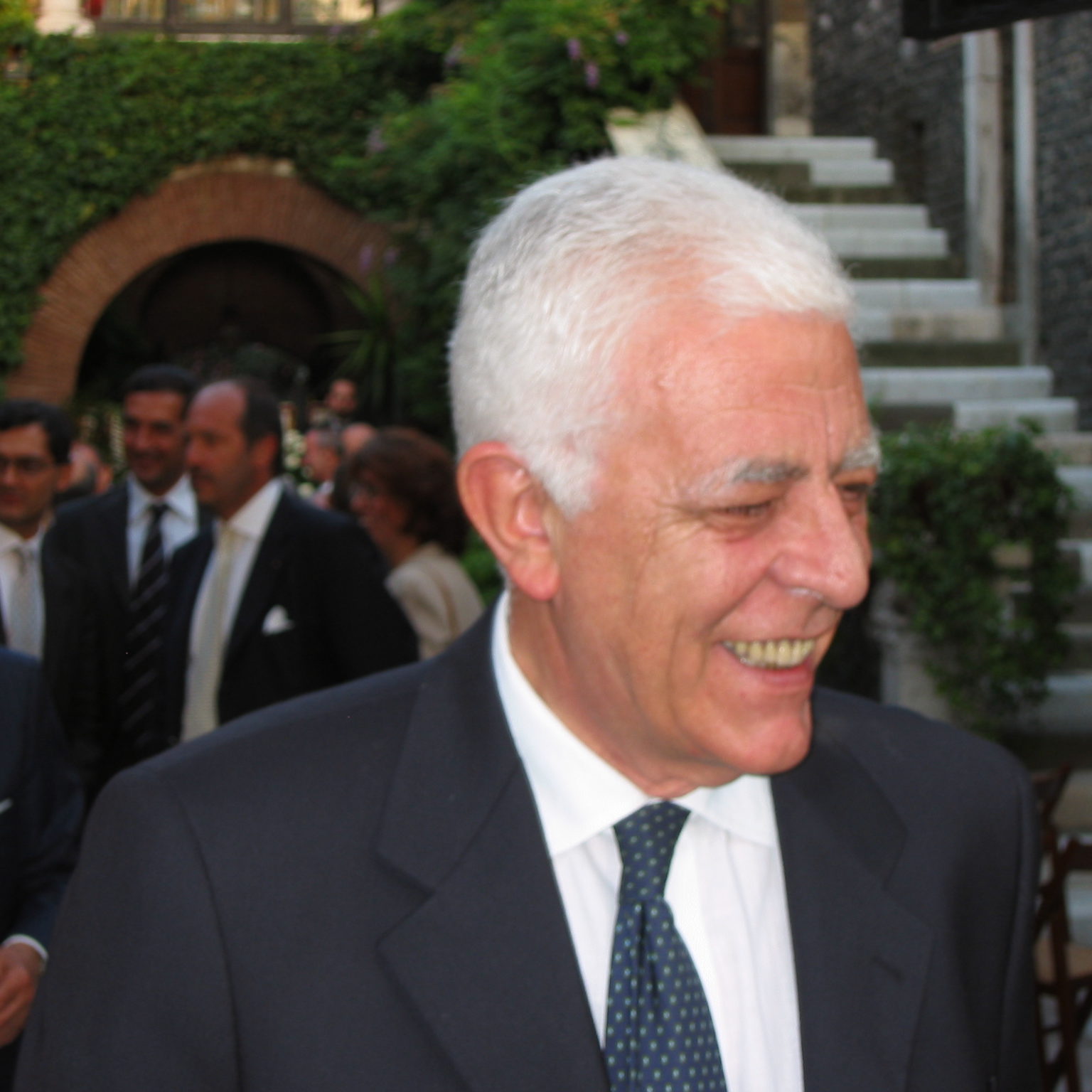
Pio Mastrobuoni
Vice-PresidentBorn in Latronico (Province of Potenza). Degree in law from the University of Naples “Federico II”. Professional journalist. Brussels ANSA correspondent from 1967 to 1975, then special foreign policy envoy of the same agency until 1989. From then until 1992, spokesman of the 5-party government (DC, PSI, PSDI, PLI and PRI) led by Giulio Andreotti. Council of Ministers Presidency representative on the board of IsMEO. Member of the IsIAO board of directors, appointed vice-president in 2008. Author of numerous articles and essays, he has published among others Cento punture di spillo, (Rome, Memori 2005) and The Islamic Kaleidoscopeon Islamic fundamentalism (Il caleidoscopio islamico, Rome, IsIAO 2006).
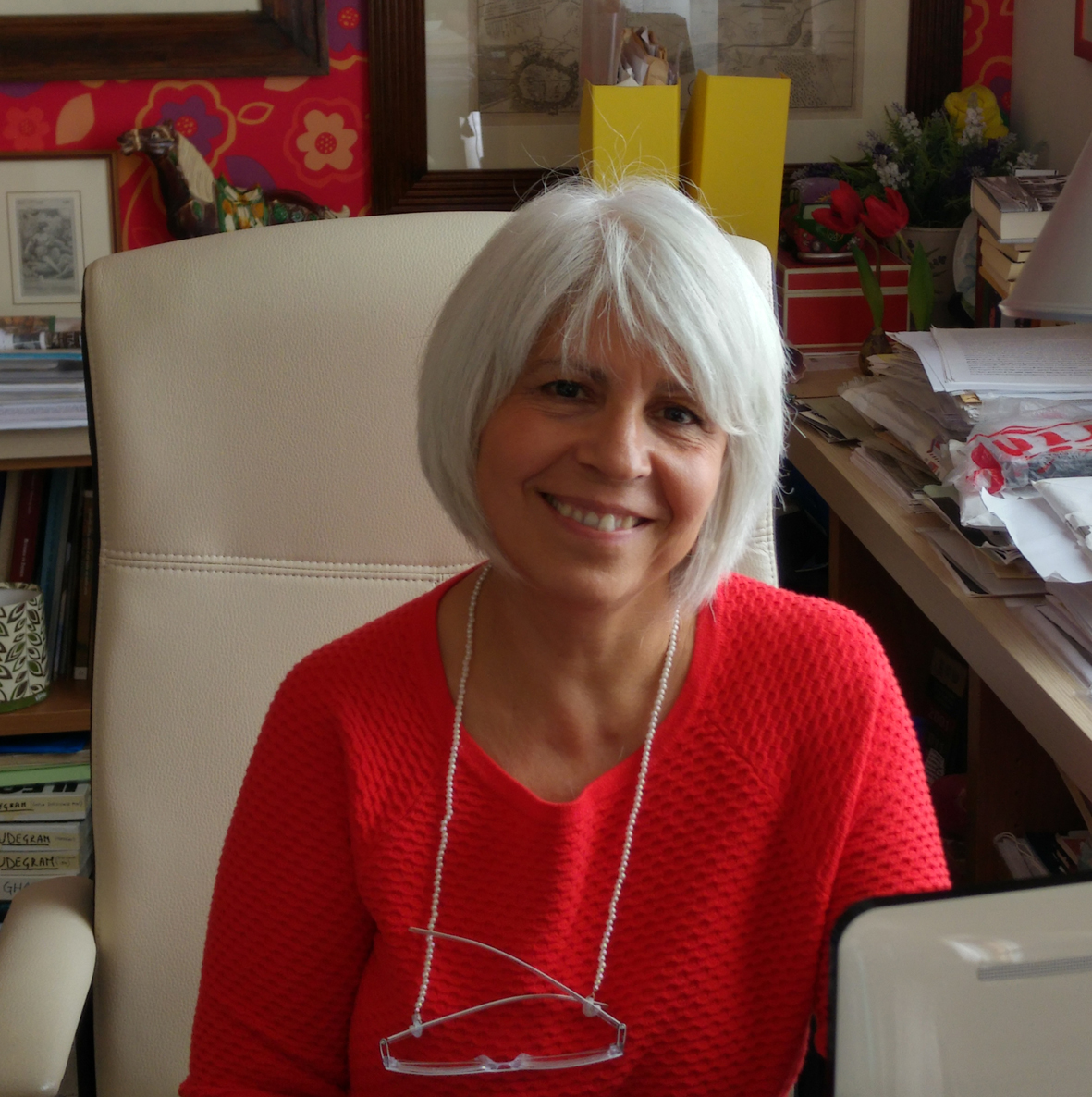
Anna Filigenzi
Vice-PresidenteAnna Filigenzi is Associate Professor, Art History and Archaeology of India at the University of Naples “L’Orientale”. Since 1984 she has been a member of the Italian Archaeological Mission in Pakistan and since 2003 director of the Italian Archaeological Mission in Afghanistan. She is the author of numerous publications on the archaeology and art history of the Indian subcontinent and Central Asia, disciplines which she also teaches. Fields of research: Buddhist iconography and architecture, especially of the Gandharic and post-Gandaric periods; cultural contacts between northern Pakistan, Kashmir, the Western Himalayas and Xinjiang, with particular regard to the development and circulation of forms of visual art and the interconnections between religious culture, politics and civil society.
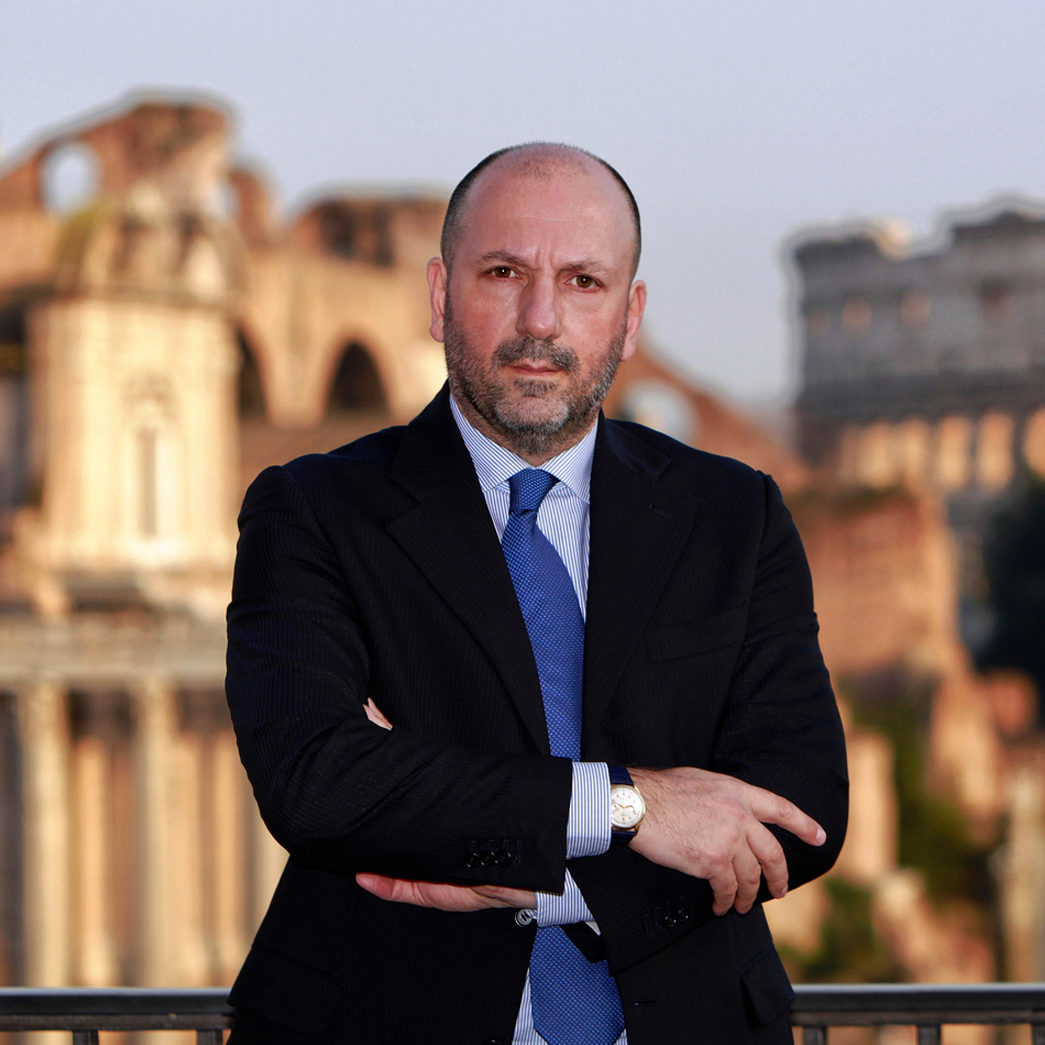
Sergio Ferdinandi
Vice-PresidenteSergio Ferdinandi (Sedan 1963) has a degree in Christian Archaeology and masters in Medieval Archaeology and Topography from the University of Rome “La Sapienza”. General manager in the Ministry of Foreign Affairs and International Cooperation, during his career he served in the General Defence Staff and the Presidency of the Council of Ministers, holding positions in the government’s Legal and Legislative Affairs Department and the cabinet of the Public Function Ministry. Specialist in Crusader and Byzantine oriental archaeology and military architecture, he is the author of numerous publications. He has participated with “La Sapienza” and the Cultural Heritage Ministry in numerous archaeological excavation, investigation and survey projects in Europe and Middle East. A lecturer and frequent speaker at national and international conferences, he is a specialist on the Italian National UNESCO Commission and a member of various international archaeological societies and institutions. Since 2019 is a member of the Consiglio Superiore per i beni e le attività culturali e paesaggistici of the Ministry of Cultural
Heritage and Activities and Tourism.

Andrea Manzo
Vice-PresidenteAndrea Manzo is professor of Ethiopian and Nubian archaeology and ancient history at the Dipartimento Asia, Africa e Mediterraneo of the Università degli Studi di Napoli “L’Orientale”, that he chaired from 2020 to 2023. He got the Certificat International d’Archéologie Africaine in the Université Libre de Bruxelles in 1991 and a scholarship from the Consiglio Nazionale delle Ricerche from 1992 to 1993. He got his PhD from the Istituto Universitario Orientale in 1998. In 2003 he was awarded the prize Giorgio Maria Sangiorgi for the history and ethnography of Africa by the Accademia Nazionale dei Lincei. Since 2018 he is a member of the Board of the International Society of Nubian Studies. He is directing the Archaeological Expeditions of “L’Orientale” and ISMEO in Egypt and Sudan and codirecting the one in Ethiopia with Luisa Sernicola. His research focus on: cultural and economic interactions in ancient northeastern Africa; origins and development of social hierarchy in ancient northeastern Africa; adoption and adaptation of iconographies, styles and ideological exogenous traits in ancient northeastern Africa; peopling and history of the peripheric regions, with specific reference to the Eastern Desert and to the Red Sea coastal areas; man-environment dynamics and the emerging of social hierarchy in ancient northeastern Africa. He authored more than one hundred fifty publications. They range from Nubian and Ethiopian to Egyptian archaeology, also touching the computer applications to archaeology (see Academia.edu; Researchgate.net, and UNORA-Iris, the research catalogue of the Università degli Studi di Napoli L’Orientale).

Alessandro Bausi
Alessandro Bausi (Florence 1963) has been a full professor of Ethiopic Studies (‘Äthiopistik’) at the Asien-Afrika-Institut of the University of Hamburg since September 2009 and director of the Hiob-Ludolf-Zentrum für Äthiopistik. He is the editor of the journal Aethiopica: International Journal of Ethiopian and Eritrean Studies, the Supplements series to Aethiopica, which he founded, and the series Aethiopistische Forschungen (Harrassowitz); he co-edits the Comparative Oriental Manuscript Studies Bulletin, which he founded. Co-editor of the fourth volume and main editor of the fifth and final volume of the Encyclopaedia Aethiopica (2010-2014), he chaired the program ‘Comparative Oriental Manuscript Studies’ (2009-2014, European Science Foundation). He is co-director of the Cluster of Excellence ‘Understanding Written Artefacts: Materiality, Interaction and Transmission in Manuscript Cultures’ (2019-2025). He is a member of the Academia Europaea, the Accademia Ambrosiana, the Ethiopian Academy of Sciences, and the Akademie der Wissenschaften in Hamburg. In 2005, he received the Giorgio Maria Sangiorgi Prize from the Accademia Nazionale dei Lincei for African Studies. He has extensively published on the Ethiopic and Eritrean textual, manuscript, and epigraphic tradition, to which he has also contributed field research, focusing on the late-antique and medieval periods, Greek-to-Ethiopic translations (with discovery and publication of new important unpublished texts), canonical, hagiographical, and liturgical collections, and critical-textual methodological issues.

Michela Clemente
Michela Clemente is a Tibetologist, currently working as a researcher at the Department ISO – Italian Institute of Oriental Studies (“Sapienza” University). From 1998 to 2011 she collaborated with IsIAO. Since 2017 she has worked at the re-opening of the “IsIAO Library” – African and Asian Collections Room (National Central Library of Rome), and she is currently the Scientific Responsible of the Tucci Tibetan Collection. Since 2010 she has collaborated with the Mongolia and Inner Asia Studies Unit (MIASU, University of Cambridge). In 2013 she was awarded with the Marie Skłodowska Curie Fellowship for her project Tibetan Book Evolution and Technology (TiBET). She was the co-curator of the exhibition Buddha’s Word: The Life of Books in Tibet and Beyond (Museum of Archaeology and Anthropology, University of Cambridge). She is currently an affiliated researcher at MIASU and a Life member of Clare Hall (University of Cambridge). Since 2019 she teaches at the Central Institute for Archives and Book Pathology (ICPAL). She has published extensively on Tibetan book culture, history and literature and is currently involved in several projects with different institutions.

Chiara Zazzaro
Chiara Zazzaro is associate professor of Maritime Archaeology at the University of Napoli L’Orientale. She has conducted research in the field of maritime archaeology and ethnography of the Indian Ocean since the beginning of her academic career, focusing on the study of contemporary wooden boats and boatbuilding traditions, ancient shipwrecks, costal sites and maritime communities in north-east Africa, in the Arabian Peninsula and in Indonesia.
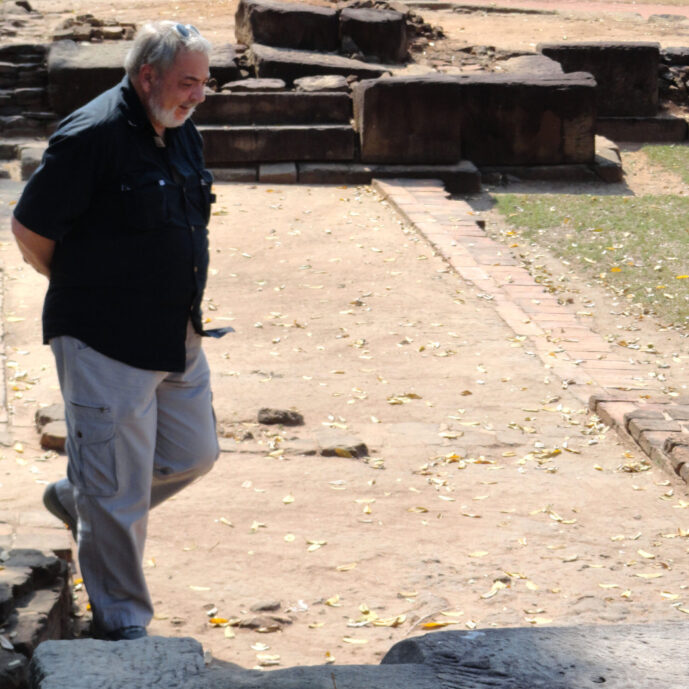
Roberto Ciarla
Roberto Ciarla, archaeologist, holds a Ph.D. in ‘Languages, Cultures, and Eastern Societies’ from Ca’ Foscari University of Venice. He graduated in ‘Chinese Language and Culture’ from the Italian Institute for the Middle and Far East-Is.M.E.O. and the Beijing Language Institute. He has participated in archaeological research projects in Italy, Turkey, Egypt, Kuwait, Oman, Pakistan, China, Indonesia, and Thailand. He was the team leader of the World Bank project ‘Sichuan Province Cultural Heritage Strategic Masterplan,’ and a member of the coordinating group and lecturer in the Italy-China cooperation project ‘Establishment of the Xi’an Center for the Conservation and Restoration of Cultural Heritage’ (Shaanxi Province, PRC) funded by the Ministry of Foreign Affairs and International Cooperation. From 1982 to 2017, he served at the former National Museum of Oriental Art ‘G. Tucci’ (Ministry of Cultural Heritage and Activities) as curator of East Asian art collections. From 1987 to 2020, he was co-director of the Italo-Thai project ‘Lopburi Regional Archaeological Project.’ His main research fields include the prehistory and protohistory of East Asia and mainland Southeast Asia; material culture and its production processes; modes and means of circulation/exchange of technologies and goods between China and mainland Southeast Asia.
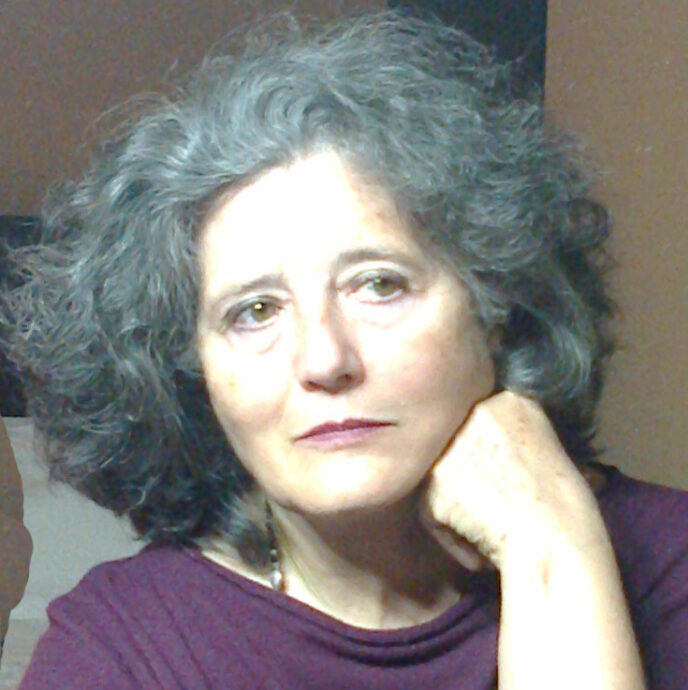
Alessandra Lazzari
Graduated in Archaeology and Art History of Ancient Near East at the University of Roma “La Sapienza”, since 1985 she is a researcher at CNR – Consiglio Nazionale delle Ricerche, Istituto di Tecnologie Applicate ai Beni Culturali (now Istituto di Scienze del Patrimonio Culturale) and head of the Institute’s library. Her researches focused on the Bronze Age cultures of Central Asia and the Arabian Peninsula. She was a team member of many expeditions abroad, in the Near East, Arabian Peninsula, Central Asia, Iran, and Italy, organized by “La Sapienza” University, IsMEO, CNR, and CNRS. She was the director of the laboratory coordinated by CNR and Shiraz University, titled “The Face of Fars. An Archaeological Survey of the Main Sasanian Monuments in the Cradle of Empire.” She is expert on management and computerisation of archaeological data and database elaboration. Indeed she created many digital archives for different expeditions in Asia, with integrated data from advanced remote sensing technology, geophysical methodologies, GIS, and numerical models. She is co-author with M. Vidale of the book “Lapis Lazuli Bead Making at Shahr-i Sokhta,” that in 2019 won the World Award for Book of the Year of Islamic Republic of Iran. She also focuses her research on the perception of the exotic in Italian comic art.
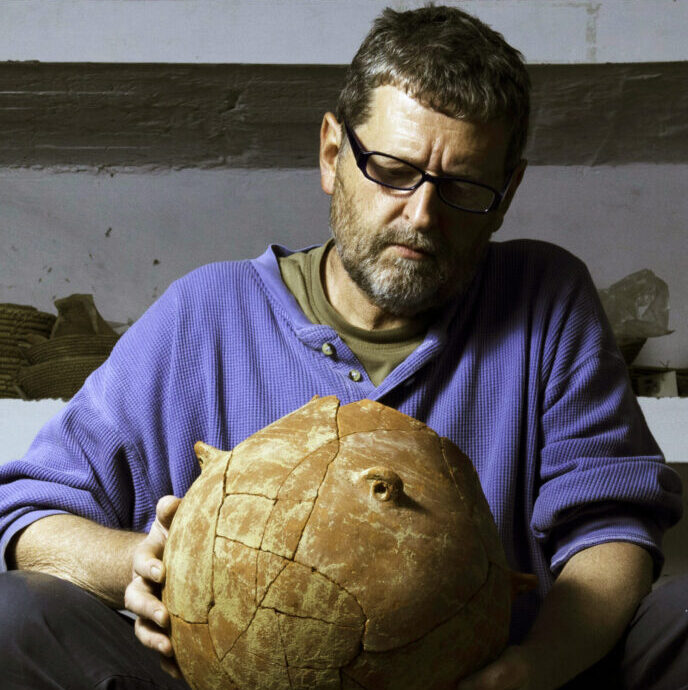
Massimo Vidale
Member of ISMEO’s Board since 2020, he was Research Fellow at Smithsonian Institution (Washington DC, USA) and for a long time he was an archaeologist for the Istituto Centrale per il Restauro (Central Institute of Restoration – ICR) in Rome. He was also visiting professor at the universities of Genoa, Rome, Bologna, Padua. At the present he’s an Associate Professor at the University of Padua, in the Department of Cultural Heritage, at the chairs of Ancient Near East Archaeology and Methodology. He was a member of many archaeological teams abroad, in Pakistan, India, Iran, Iraq, Turkmenistan, Eritrea, Tunisia, Italy, and director of different archaeometric research projects. He’s actually the director of the Archaeological Italian Mission of ISMEO in south-eastern Iran.
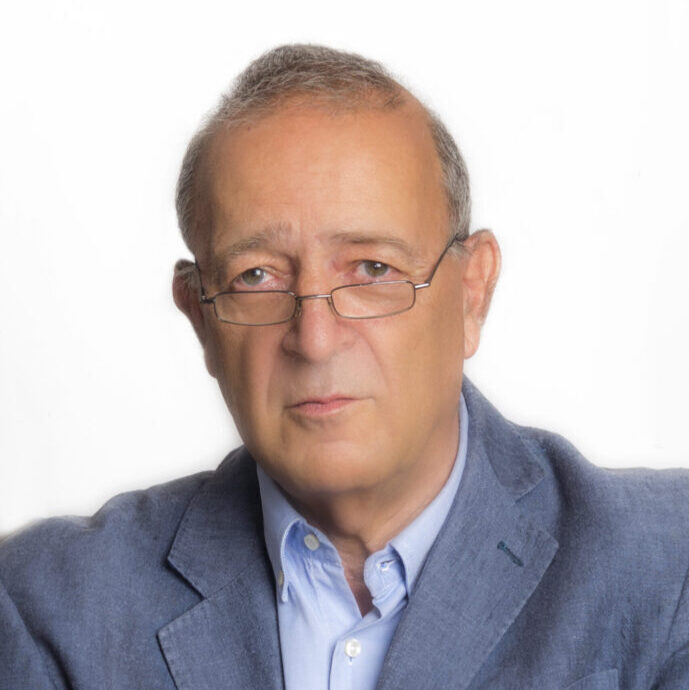
Giorgio Banti
Giorgio Banti, born in Rome (1949), has studied in the Universities of Pisa and of Rome “La Sapienza”. He has served as a full professor since 1997 till his retirement at the University of Naples “L’Orientale”, where he has taught General and Historical Linguistics and, since 2009, also Somali Language and Literature. From November 2014 to October 2019, he has also been Vice- Rector of that University. Before coming to Naples, he taught in Rome, Cassino and Potenza. Besides these institutions, he has also taught in several other universities outside his country, such as those of Hamburg, of Bayreuth, of Zurich, of Addis Ababa, of Djibouti, and the former National University of Somalia in Mogadishu. He has been in the Somali-speaking countries of the Horn of Africa, as well as in Ethiopia, Eritrea and Northern Sudan for doing fieldwork in linguistics, oral literatures, and Ajami manuscripts and publications since 1979. Since 1997 he has been a member of the Scientific Board of the IsIAO (Italian Institute for Africa and the Orient) for several times. He has published monographic studies and articles on topics that range from Cushitic languages and literatures (especially Somali, Saho and Oromo), to Cushitic historical linguistics, Old Harari language and literature, Nara language and literature. In addition to these topics related to the Horn of Africa, he has also published on Old Indic, Ancient Greek and Classical Arabic syntax. For some years, he has also worked on LADO, a specific field of forensic linguistics, with a Dutch company. On June 20, 2001, he has been given the Award “Giorgio Maria Sangiorgi” for the History and Ethnology of Africa by the Accademia Nazionale dei Lincei.
Download our statute
How to find us:
The association is based in Rome: 244, Corso Vittorio Emanuele II – Palazzo Baleani – Second floor.
ISMEO – The International Association for Mediterranean and Oriental Studies
IBAN IT75V0200805052000102392454 UNICREDIT
